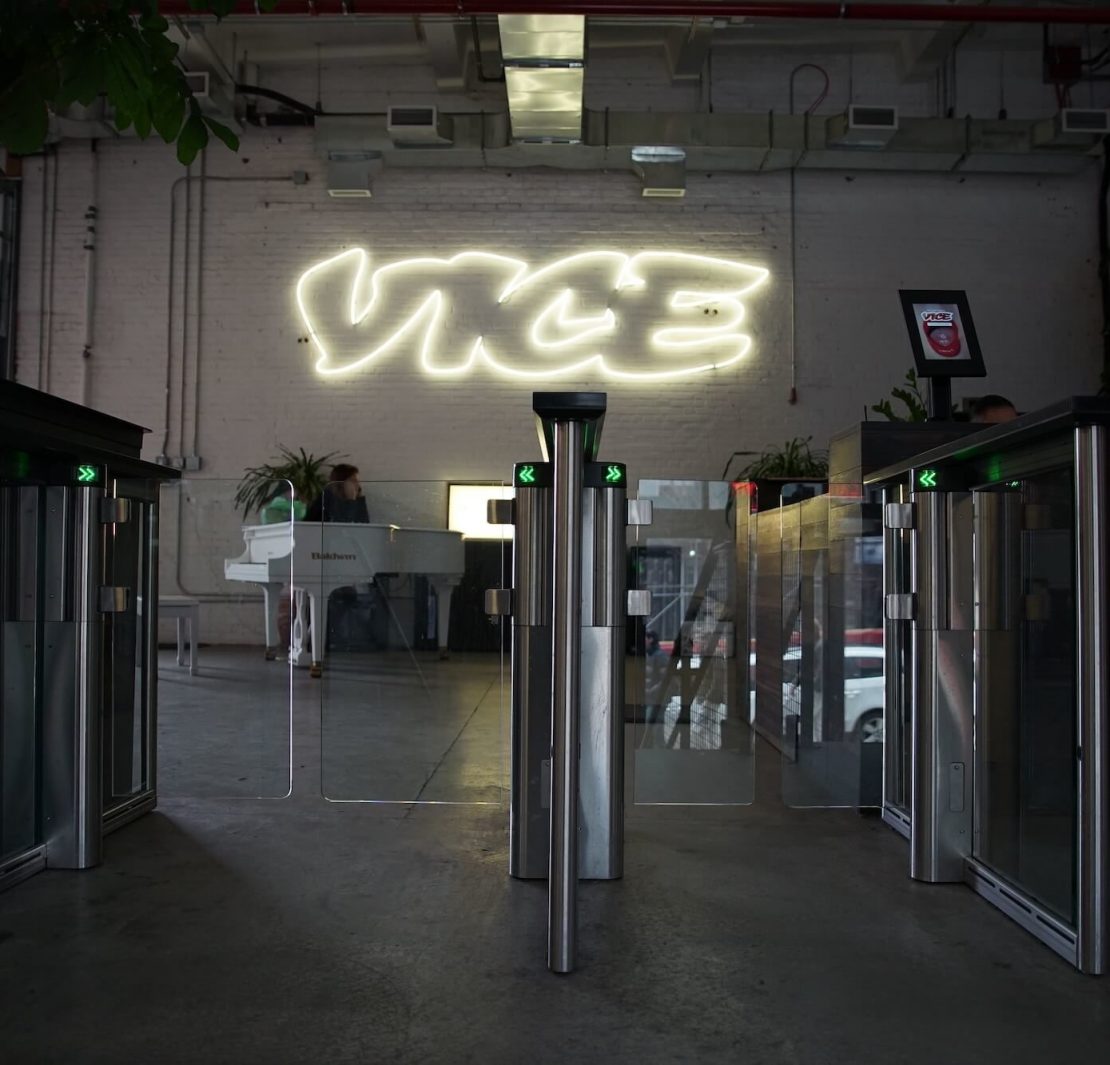Longtime digital media darling and youth-focused broadcasting company, Vice has filed for Chapter 11 bankruptcy.
On Friday, news emerged that Vice Media is close to a deal to be bought out of bankruptcy by senior lenders, thereby wiping out existing shareholders. Vice was valued at up to $5.7 billion in 2017 after rejecting a potentially $3 billion-plus deal with Disney two years earlier.
But Vice Media’s downfall wasn’t a shock to anyone – the company had already been financially struggling for a few years now, and earlier this week, The New York Times reported that bankruptcy was imminent. A few weeks ago, the company shuttered VICE World News and cancelled VICE News Tonight, its flagship news television program, laying off more than 100 employees across the newsroom.
The group of lenders to Vice, which includes Fortress Investment Group and Soros Fund Management, has secured a $20 million loan to continue operating the company during the Chapter 11 process. This chapter of the Bankruptcy Code generally provides for reorganization, usually involving a corporation or partnership. A Chapter 11 debtor usually proposes a plan of reorganization to keep its business alive and pay creditors over time. Daily operations of its flagship website along with the ad agency Virtue, the Pulse Films division and the women-focused Refinery29 will continue uninterrupted. Fortress, Vice’s largest debtholder will likely be the new owner, according to multiple reports.
Smith started Vice in 1994 as a punk magazine called Voice of Montreal based in Montreal, Canada. In 1999, Vice moved its operations to New York City and, over the next few years, expanded rapidly into digital media with a distinctive edgy, opinionated style that targeted younger consumers. Vice, with a slate of YouTube channels, suddenly had a production deal with HBO, operated at least one cable channel, and was winning Peabodys for news. Its valuation at one point was touted as being close to $6 billion.
Just over a decade ago, media mogul Rupert Murdoch endorsed the company in a tweet after an impromptu visit to the media upstart’s Brooklyn offices – which resulted in a $70m (£55m) investment. Vice was one of the frontrunners in the world of new-age digital media, and it seemed to have a bright future ahead.
Who's heard of VICE media? Wild, interesting effort to interest millenials who don't read or watch established media. Global success.
— Rupert Murdoch (@rupertmurdoch) October 13, 2012
The news of bankruptcy comes less than a month after another Digital media colossus, Buzzfeed shut down its news operations, laying off 180 employees. The Pulitzer-prize winning division was once considered a serious challenger to traditional media outlets that had been slow to adapt to the internet – a true media disruptor.
On the same day that Buzzfeed announced shutting down its news division – Axel Springer-owned Insider, formerly known as Business Insider, announced it would cut 10% of its global workforce to “remain healthy and competitive”. Earlier this year, Vox Media raised money at roughly half its 2015 valuation.
At the start of the 2010s, Vice and BuzzFeed — along with the Daily Beast and the Huffington Post — were the standard bearers of a new generation of media outlets that were completely online and ready to battle the traditional purveyors of news. The model quickly seduced investors but didn’t fare well in the long run. These media groups have different profiles and goals, but one thing they have in common is a reliance on advertising dollars to fund their operations. Buzzfeed News’ demise had begun back in 2020 – the company had already shut down its news operations in Australia and UK, as advertising revenue dried up. When announcing the closure, Jonah Peretti accused the “big platforms” of a failure to support “premium, free journalism purpose-built for social media”.
Traditional media outlets rely heavily on reader revenue for financial security, and with companies like Times – readers are willing to pay, which is why they still stay afloat. On the other hand, brand advertising is the lifeblood of free digital media. After Meta changed its algorithm to de-prioritize news-based posts, it slashed Vice and BuzzFeed’s massive audiences and hoovered up the bulk of digital advertising. Without huge traffic numbers, advertisers turned away and would no longer shell out millions – and they couldn’t successfully transition to a paywall model after all these years.
“It’s the end of the marriage between social media and news,” Ben Smith, the onetime editor-in-chief of BuzzFeed News, told The New York Times.
The recent downfall of these digital newcomers is by no means an indication that traditional media will eventually win. It has had its fair share of losses. But it’s certainly a grave reminder to founders that businesses go beyond advertising.




